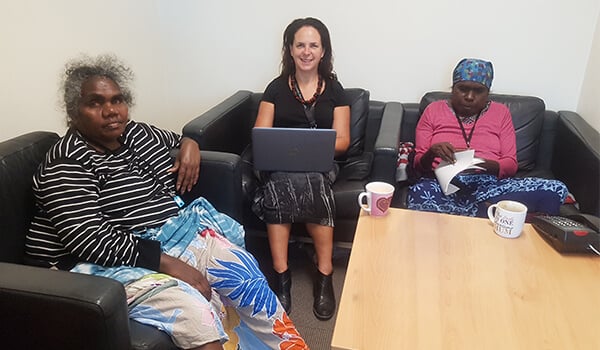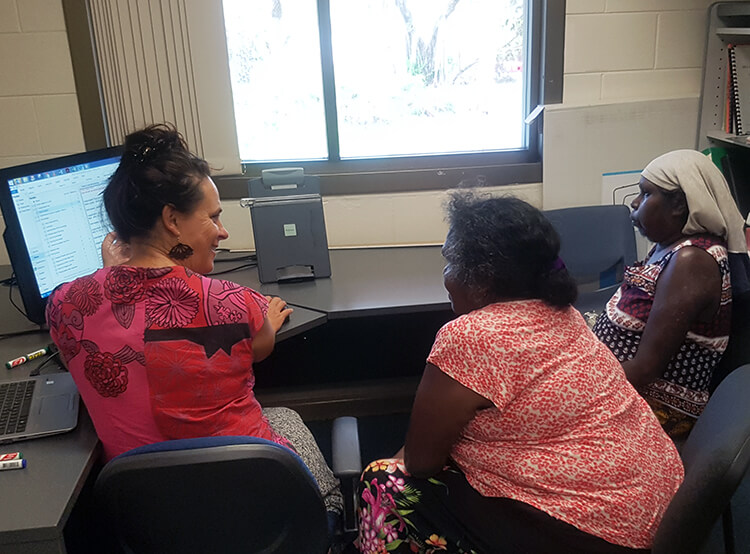
(L-R) Yunutju Gondarra, Emma Haynes and Minitja Marawili
For Aboriginal Community Researchers Minitja Marawili and Yunutju Gondarra, the work of the END RHD CRE is deeply personal. Hailing from remote communities in the Northern Territory, they’ve witnessed the heartbreak caused by rheumatic heart disease (RHD) first-hand, and are passionate about finding community-led, research-backed solutions to prevent the disease.
As part of the On Track Watch project facilitated by END RHD CRE PhD student Emma Haynes, NT-based Minitja and Yunutju are working to ensure that teenagers who have had acute rheumatic fever (ARF) receive their treatment “on track”, and that the community is “on watch” to recognise and seek treatment for sore throats and skin sores to prevent new cases developing. As part of this work, both have recently completed a Certificate II in Community Health, run through Menzies School of Health Research.
In April and May, Minitja and Yunutju embarked on a trip to Darwin and Perth to further develop their research skills, and share their learnings and experience of the On Track Watch project. They met with various researchers working across Aboriginal Health, and presented at the END RHD CRE Annual Meeting, the The Kids Group A Strep Team Meeting, and the Wesfarmers Centre for Vaccines & Infectious Diseases Seminar.
Both shared stories of the toll that RHD has taken on remote Aboriginal communities that they have visited and lived in, and spoke of the empowerment that their role brings to these communities – giving those directly affected by the disease a voice in the research process.
Minitja said that for her, her role provides “a pathway of looking at two different cultures”. She shared that her job hasn’t always been easy, due to the complexities of learning and translating messages around RHD prevention and treatment, using local concepts and multiple local languages.
“In the beginning of my research journey I had some challenges – language of research, analysing data and using the software” she said.
This brought to light the importance of developing culturally appropriate materials to support both researchers and those in the community at risk of RHD.
During their time spent with Emma and others, they developed a series of metaphors to help conceptualise research practice and processes. In one example, they compared the process of weaving pandanus to the qualitative research process – from the searching for and collecting pandanus leaves (seeking interview participants and conducting quality interviews); to sorting, cleaning, and colouring the leaves (cleaning and coding the interview data); to weaving the pandanus into something functional – a basket or a mat – that can be used by everyone (developing a meaningful “story” from the data, and sharing the research findings).
Reflecting on their travels, Minitja and Yunutju found their time in Darwin and Perth helped them better understand a range of research processes, as well as how important their role as Aboriginal Community Researchers is in the big picture of working to end RHD. Those who had the chance to meet with them found the experience invaluable, and all at the END RHD CRE hope to welcome them back soon!
Minitja and Yunutju’s travel and training was funded through the END RHD CRE’s capacity building program and HOT NORTH.

